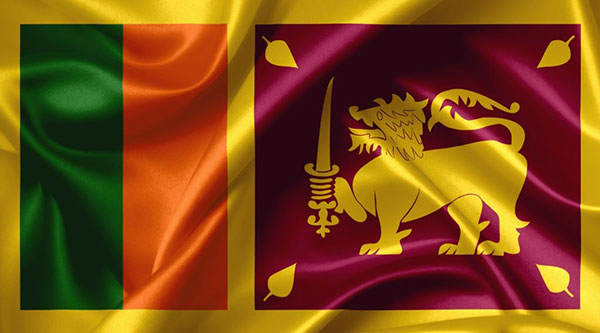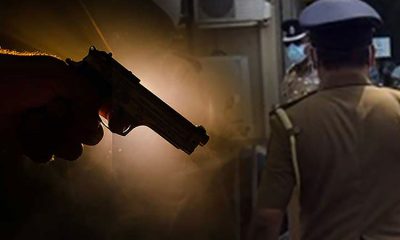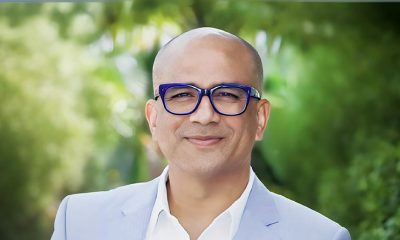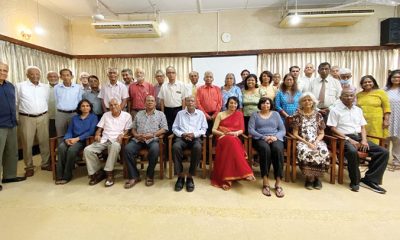Features
The Ethnic or Tamil question in Sri Lanka

by Jayadhamma Athukorala
(Continued from last week)
The first recorded South Indian invasion occurred when two Tamils, Sena and Guttika, wrested the kingdom from King Suratissa in the 2nd Century B.C. The Mahavansa ( Geiger translation – p 142/143) says ” Two Damilas Sena and Guttika….conquered the king Suratissa …..and reigned…. for twenty two years justly” (my emphasis) There is no denouncing of the Tamil conquerors. The description of the reign of the next Tamil conqueror, Elara, was even more generous. The Mahavansa (Geiger -p 143-145) devotes no less than 20 Pali stanzas to extol his virtues (some, obviously exaggerated).
Then, after Dutugemunu’s victory over him, the first act of the victor, to his eternal credit, was to perform the funeral rites of his fallen enemy with royal honours, erect a monument in his honour and decree that even royals passing that site must pay due honour – MV p. 175 ( a decree that even as late as 1818 Keppetipola Nilame fleeing the British after the failure of his rebellion is reported to have obeyed). Many Sinhala kings sought their consorts or consorts for their siblings in the Dravidian royal courts of South India – at the beginning, even Vijaya himself reportedly sought and obtained his queen from the royal court of Madura in South India.
Vijayabahu I whose own queen was from Kalinga gave his sister Mitta in marriage to a Pandyan prince who became eventually the paternal grandfather of Parakramabahu the Great (who therefore had Pandyan blood in his veins). Parakramabahu had two generals named Rakkha and Aditya who are both referred to in the Mahavansa as Demala Adhikari ( Ch. 75 & 76) . In the Kotte royal court of later times, we see the presence of many Perumals in responsible positions.
Even Sapumal Kumaraya was originally Sembahap Perumal, reportedly the orphaned son of an aristocratic Keralite warrior who died in combat in the service of Parakramabahu VI. Sapumal ascended the throne later as Buvanekabahu VI. In the early Kotte period, it is also intriguing that the Chinese admiral Zhen He, who carried off Vira Alakeshvara to China as a prisoner, erected in Galle a trilingual stone inscription, using the Chinese, Persian and Tamil languages. In the Kandyan kingdom, kings from Rajasinghe II appear to have sought consorts from Madura resulting in the mothers of Vimaladharmasurya II and Narendrasingha- the reputed last Sinhala king, being South Indian Tamil princess).
I have already referred to the in-migration of large groups from South India in the 14th or 15th centuries, now indistinguishably part of the mainstream. It is known that certain Kandyan aristrocrats of the present day have acknowledged their South Indian (though Brahmanic) provenance. Few knowledgeable people in the country today are not aware of the comparatively recent, documented and admitted, South Indian antecedents of some very prominent Sinhala leaders of the present day. Such information has even ceased to be of much interest.
What I have been trying to point out is that historically the relations between the Sinhalas and Tamils have far from being hostile all the time. We are not congenital enemies. We have no tradition of enmity to pursue – as it was between the Montagues and the Capulets in Romeo and Juliet.
The emergence of a Tamil kingdom
in the North
It is time to turn to another aspect of history – the establishment of a Tamil kingdom in the North. By about the 10th century, Sinhala kings appear to have lost control over the territory beyond Anuradhapura and by about the 14th century an independent Tamil kingdom appears to have been established in the Jaffna peninsula, with the intervening Vanni being under many semi-independent Vanniyars. Only once for a brief period under Parakramabahu VI the overlordship of Sinhala kings had been re-established thereafter in Jaffna (-Sapumal Kumaraya’s famous conquest of Yapapatuna). Once Sapumal left Jaffna to become King in Kotte, the Sinhala suzerainty over the Jaffna peninsula again lapsed.
To make matters worse some Jaffna kings (like Arya Chakravarti) became so powerful even to challenge the Gampola period Sinhala kings and exact taxes in some areas of their kingdom, up to about Matale. Arya Chakravarti even overran the western seaboard up to at least Panadura at one time. He was only checked by Alakeshvara, (who himself may have been an immigrant) who founded the capital at Kotte. This sequence of events is no doubt painful to any Sinhala brought up on the tradition of Tri Sinhala, but these are solid historical facts that we have to accept whether we like them or not.
The Jaffna kingdom so established surrendered finally only to the Portuguese. The Dutch took over from them and finally the British. The important legal/constitutional point to note here is the ground reality of Jaffna coming under colonial rule not as part of a subsisting all-island Sinhala kingdom but as a separate sovereign entity. This is what makes it incumbent on us to refrain from summarily dismissing the claim of Northern Tamils to some kind of special consideration. We should be happy that they did not press a claim to separate status at the time we achieved independence from the last colonial ruler (although there were some rumblings, it did not go far).
The British, to repeat, held the northern areas by right of conquest, a conquest that was separate from their subsequent conquest/annexation of the Sinhala areas. We should not be foolish to think that anybody will take us seriously in the modern world if we try to press the long obsolete all island Tri Sinhala claim. That is the bitter truth. (The situation in the Eastern province is different. Even later Kandyan kings continued to exercise suzerainty there, as is documented in treaties with colonial powers)
Sinhala-Tamil Co-operation during colonial times
During the British period, up to about the twenties of the 20th century Sinhala and Tamil leaders have co-operated with each other in their interactions with the colonial government as well as in other public work. In order to avoid a long exposition on this point, the following extracts from the unpublished diaries of Anagarika Dharmapala may be cited as a testament to that fact:
1889 Nov 14th
……..Went to see Muhandiram. Talked about the proposed College for the Sinhalese and Buddhists to be founded by the Hon’ble Mr. Rama Nathan and the Muhandiram promised to help it as much as he can. ………….
1911 Dec 20
………Then I went see Ramanathan and he greeted me cordially and spent about two hours in discussing over spiritual and economic subjects. A wonderfully clever man he is but he is insufficiently informed about the Dharma. …..
1915 Oct 21st
October 14
Historic meeting of the Ceylon Legislative Council. Ramanathan on behalf of the suffering Sinhalese spoke for two hours denouncing the Govt. officials for the atrocities committed on the helpless villagers during the Court Martial trials. ……
The above references are to Sir Ponnambalam Ramanathan, Member, Ceylon Legislative Council, the ‘grandfather legislature’ of Sri Lanka. His brother Sir Ponnambalam Arunachalam took the lead in forming the Ceylon National Congress and was its first President. I have heard from my father that when Sir Ponnambalam Ramanathan returned from England once, after a mission on behalf of Sri Lanka, Sinhala leaders unharnessed the horses of the carriage he was to ride home from the Colombo Jetty and pulled it themselves. Prof. K.M.de Silva has quoted in his book History of Sri Lanka, the fulsome praise given to Ramanathan by Sarasavi Sanderasa the leading Sinhala Buddhist journal of the day, ending up by saying ‘Buddhists owe Mr. Ramanathan a deep debt of gratitude’, for Ramanathan’s espousal of the cause of Sinhala Buddhists in the legislature- vide p. 461)
These fraternal relations soured later for reasons I need not go into but suffice it to say that one reason was an act of breach of faith by two Sinhala leaders who went back on a promise to help secure a seat in the legislature for Tamils in the Western Province. (vide History of Sri Lanka – K.M.de Silva, p.480) In this connection we might note that at the present time Mr. Mano Ganesan has been an elected member of Parliament for the Colombo District for a long time, without there being any special reservation either, thus providing ample justification for the old aspiration of Western Province Tamils. May not the keeping of that old promise by Sinhala leaders have changed the whole course of subsequent events, even saving many lives?
Special position of Tamils under colonial rule
However, it must be recognized that Tamils appeared to enjoy a privileged position under the colonial regime. This may have been due to two reasons – (a) compared with the magnitude of the population and the extent of territory occupied, Tamils seemed to enjoy more facilities for an English education than the Sinhalas. As English education was provided mostly by Christian missions and not by government I am unable to say whether this was due to deliberate colonial policy or otherwise.
However the fact that the Sinhala elite of the last decades of the 19th century did not wish the ordinary people to have an advanced education is proved by the following reference made by Prof. K.M.de Silva, to a speech made by J.P.Obeyesekere, Sinhala representative in the Legislative Council, sometime in the 1880s: ..And he argued forcefully for the imposition of the severest restrictions for entry to all schools, so that the children of the rural poor would be forced ‘to follow such avocations as they are fitted for by nature’ – ‘A History of Sri Lanka’ p.419. Tamils at that time apparently had no such ‘far sighted’ representatives of theirs to bother about!
Anyway, the indisputable fact is that in the matter of placement in the professions and in government employment, Tamils due to greater numbers of them being English literate, in addition to any other reasons, came to enjoy a position in excess of their ratio in the population. (b) The colonial government, as all colonial governments do, undoubtedly followed a policy of divide and rule and in this matter discriminating in favour of a minority would have been a very attractive tool. I must say I am only hypothesizing but there may be those who have researched the subject.
However, I must qualify the above statements by saying that any such privilege was enjoyed by only English educated middle-class Tamils and not the ordinary Tamil peasant, artisan and the fisherman. Their lot was the same as that of their counterparts among the Sinhalas. Anyway another point that needs emphasis is that hardly any Tamil living today had enjoyed such privilege in colonial times. ‘Sins’ of fathers should not visit innocent progeny. Resentment on that score is completely unwarranted.
Reversal after Independence
Whatever privilege English educated Tamils may have enjoyed in colonial times, they lost it after Independence. We made the plight of Tamils worse since then, by going in the reverse direction and denying them even what they were entitled to. Such was the imposition of the Official Language Act (‘Sinhala Only’ Act) in 1958. One example will illustrate this in practical terms. In colonial times, Sinhala and Tamil villagers, whenever they received an official letter or a telegram, had to go in search of an English educated mahattaya to get it translated.
After the full implementation of the Sinhala Only Act, a Tamil villager had still to go in search of a Sinhala knowing dorai. That was a needless harassment and humiliation. Now (after 1978) both Sinhala and Tamil have been made official languages, after many lives have been sacrificed over the issue in the subsequent decades (However still the legal position has not been made practical reality universally, as was forcefully impressed on me when I had to shamefacedly send a Treasury circular in Sinhala, on an important subject, to a Tamil University Chancellor friend, who sought my assistance to get a copy of that circular.
I had to do so because a Tamil or even an English version had apparently never been issued. I also failed in my attempts to get at least an English translation of the Minutes of the monthly Government Agents conference issued to the eight participating Tamil speaking GAs, because the senior officer responsible stubbornly avoided doing so despite the repeated instructions of her official superior.
It is worth mentioning here that at the time the Sinhala Only Act was passed, most schools in Jaffna taught Sinhala as a subject. Prof. Karthigesu Indrapala has said that Sagara Palansuriya, poet and one time MP, was his Sinhala teacher. A senior Tamil clerk of mine once taunted his Sinhala colleagues saying that he unlike them learnt Kumaratunga Sinhala in school. However, immediately after the humiliation of Sinhala being forced down their throats by the Sinhala Only Act, all that changed. Jaffna schools stopped teaching Sinhala. (At a recent gathering a Tamil engineer told me that when that happened, his father being a practical man took him to the Jaffna Buddhist temple and requested the monk to teach him Sinhala).
This whole sorry episode could have been handled differently if statesmanship had prevailed. The majority of ordinary Tamils, just like the majority of ordinary Sinhalas, are practical men, minding their own business and not playing politics. But as a self-respecting people they resented being humiliated. It was this humiliation, coupled with intransigence and stupidity on both sides that finally led to the war and the loss of so many lives on both sides. At the 1952 General Election, at a time when there was yet no language problem, the Federal Party which first raised the devolution of power issue, fared very poorly. The Northern Tamils were not so much bothered about the state power structure. However once humiliated they lost confidence in the majority dominated state structure.
The present generation, which has not lived through the gradual evolution of the so-called ethnic problem, like many of us elders have done, must not let themselves be deluded to think that everything started with a maniac called Prabhakaran. ‘Prabhakaran’ was long in the making and our Sinhala ‘leaders’ (including many Buddhist monks) have made a ‘generous’ contribution to that outcome.
In any case, when a war was forced on the country through political stupidity and lack of statesmanship, it had to be fought. In the Bhagavat Gita. Krishna explains to Arjuna that, once war has come about with his kinsmen, the Kurus, it was his duty to fight it, regardless. So, it was for our soldiers and they fought bravely. They fought suffering much hardship. We owe them much. Their victory was the basis on which we should have built a peaceful and prosperous New Sri Lanka. That was primarily what we owed the Ranavirus. We should have ensured that their children also would not be fated to get into flooded trenches and there to die. So far, we have failed them.
(Continued next week)
Features
Pluralism and democracy increasingly targeted in US

 If anti-Semitism is indeed on the rise in the US’ seats of higher learning and elsewhere in the country, the federal and state governments of the US are obliged to stamp out by non-coercive means such divisive tendencies without delay. This is in view of the US’ status as a foremost democracy of the world.
If anti-Semitism is indeed on the rise in the US’ seats of higher learning and elsewhere in the country, the federal and state governments of the US are obliged to stamp out by non-coercive means such divisive tendencies without delay. This is in view of the US’ status as a foremost democracy of the world.
Anti-Semitism and other forms of racism run antithetical to the principles of democracy and governments claiming to be democratic have no choice but to ensure that such blights do not take root in their countries. Accordingly, anti-Semitism and antipathy towards Palestinians and the Islamic faith, for instance, are in the same league of heinous offences that demand instant eradication by governments that are pledged to upholding democracy and its core principles and values.
However, the above responsibility does not devolve only on governments. The obligation is cast on all sections of society that cherish democracy to denounce racism in all its forms and to help in its eradication.
For example, if the Israeli state comes to be perceived as racist, the same applies to those sections in the Islamic and Arab world and outside who voice their support and by their selective silence promote those states and groups in the Middle East that are supportive of anti-Israeli militant violence that is pledged to destroying by whatever means the Jewish state. A solution to the Middle East conundrum needs to be entirely democratic in nature and should be sensitive to the prime needs of the principal parties to the conflict.
These home truths, as it were, need to be borne in mind at the present juncture when some of the US’ most prestigious universities, such as Harvard and Columbia, are coming to be seen by the Trump administration as fostering anti-Semitism. Among other things, these universities are being pressured by the administration to not only end ‘anti-Semitism’ but to also see an end to diversity, equity and inclusive policies and programs that have been initiated by them. If the universities fail to act in this direction they would be at risk of losing state financial assistance that have been hitherto extended to them, reports indicated.
As has been noticeable over the past few months, anti-democratic tendencies are steadily on the rise in the US and directives to the country’s universities to see an end to diversity and equity programs, for example, could only help in deepening these anti-democratic proclivities. Indeed, not only is white supremacy being enthroned in the US but ethnic equity and pluralism are being seen as dispensable values. That is, democracy is being dealt a fatal blow.
In the medium and long terms in particular, a state-backed white supremacist ideology would only increasingly contribute towards societal discord in the US. This is because a policy of non-inclusivity would result in the country’s ethnic, religious and cultural minorities turning hostile towards the state and those sections supportive of it.
Thus, the Trump administration could be seen as eroding the democratic credentials of the US and paving the way for an eventual onset of disintegrative tendencies that could make internal governance challenging.
A reliance by the central administration on purely coercive means to blunt such deleterious trends would only end up promoting the same divisive tendencies because a heavy reliance on law and order measures by a state in these circumstances usually brings about the very situation that is being sought to be avoided. That is, increasing anti-state violence and internal disintegration.
In view of the foregoing it is with skeptical doubt that the commentator needs to react to the Trump administration’s claims that a Middle East settlement is on its priority list. Considering that a political solution is not possible in the region in view of the administration’s downplaying of inclusivity and equity; rather than furthering the cause of peace, the commentator is left to conclude, that Washington is currently singularly focused on only serving the interests of Israel. Needless to say, this is not the way to go if a fair solution is to be aimed at. For, the ‘Two State solution’, which accords with democratic pluralism, remains the only viable path to a settlement.
However, it cannot be emphasized enough that the legitimate interests of all major parties to the conflict must be served if a political solution that is sparing of bloodshed and war is to be worked out swiftly. While an equitable solution must thus be strived for, it is crucial that Israel’s security is guaranteed by its adversaries in the Middle East and outside in iron-clad fashion. Until this condition is met it would be futile to speak of a viable solution.
As matters stand, the US is not qualified to take on the role of a Middle East peace broker. As long as it is seen as not treating all the major parties to the conflict equably, the US would be viewed with suspicion by the Palestinian side and its strong backers. However, countries such as Egypt and Qatar are, for instance, more qualified for the job.
The main task for the latter would be to persist in promoting a political solution. They are faced with the grueling challenge of convincing Israel, Hamas and the latter’s main backers of perceiving the futility of continuing with the bloodletting. In the short term, though, another Middle East ceasefire needs to be shored-up.
Unfortunately, the Trump administration is going largely unchallenged locally and internationally. The prime universities that are being directed to end their inclusivity programs and other ventures that are aimed at enhancing the US’ democratic credentials are fighting back but it is a wider, vibrant movement aimed at giving back to the US its democratic identity that could prove doubly effective. A getting back to the streets with increasing strength of those sections of the public that are staunchly opposed to Trump policies could yield some dividends currently.
The latter opposition sections need to be strongly backed by the Democratic Party which is yet to prove that it is living up to its role as the ‘government in waiting’. Hopefully, the latter would rise to the challenge sooner rather than later.
Features
Future economic growth requires political reforms today

The NPP government is under criticism for being slow to move forward with its election promises. The Opposition political parties have criticised it for not delivering on its promises with regard to renegotiating the IMF agreement to be more people-friendly. The government seems to have accepted the IMF targets for revenue collection and restricting government spending to the letter. Civil society groups are critical of the government for not repealing the Prevention of Terrorism Act (PTA) and Online Safety Act (OSA) which bolster the repressive potential of the government, and which the NPP had promised to repeal. The problem with the delay in implementing promised political reforms is that it not only undermines the government’s credibility but also has the potential to undermine Sri Lanka’s economic recovery.
Sri Lanka has received a breathing space of three months to negotiate with the US government regarding tariffs to be imposed on Sri Lankan exports to Sri Lanka’s largest export market. The country faces a similar challenge to protect its export markets with regard to the EU, its second largest trading partner and potentially its largest, which is currently favouring Sri Lanka with its GSP Plus tariff concession. This trade concession (or incentive) provides Sri Lanka with duty-free access to the EU market for over 6,000 product lines, including textiles, garments, and seafood. The continuation of GSP+ benefits is contingent upon Sri Lanka’s adherence to 27 international conventions related to human rights, labour rights, environmental protection, and good governance. It needs to be borne in mind that the GSP Plus facility was withdrawn in 2010 due to the government’s failure to meet human rights standards.
While Sri Lanka regained the GSP Plus in 2017, doubt was placed on its continuation when, in 2021, the EU Parliament called for a reassessment of the tariff concession on human rights grounds and called for the PTA to be repealed, citing its provisions for arbitrary detention and its misuse—especially against minorities in the North and East. The NPP’s own election manifesto pledged its repeal. But not only is the PTA still on the books, but it is being used to this day. In response to a query whether the EU is ready for any leniency in its approach this time because Sri Lanka is in an economic crisis, the EU Ambassador Carmen Moreno is reported to have said, “We are all going through a difficult time. Again, are you telling the IMF to lower the bar? And to give you a free pass? We are giving you duty-free access. You just have to comply.” Sri Lanka risks exclusion from the scheme in 2026 if it does not demonstrate tangible progress in fulfilling its obligations.
MAIN PRIORITIES
It would appear that the government’s main emphasis at the present time has been to keep the economy functioning smoothly without mishap which explains its adherence to the IMF agreement. The government feels that the growth of the economy and the elimination of corruption and waste are the two main factors that propelled it to power at the last presidential and general elections. It needs to add the EU commitments to human rights to this list as they have a bearing upon economic growth. The EU’s Ambassador has made the point that the GSP+ mechanism is not a “stick” but an “opportunity,” and the EU seeks genuine engagement, transparency, and a credible roadmap for reform. The government needs to show the same degree of commitment to implementing GSP Plus conditions as it has to the IMF agreement and in putting an end to corruption and waste. The rejuvenation of the Bribery and Corruption Commission (CIABOC) is a reaffirmation of this commitment.
However, the government appears to be reluctant to get into other areas of governance at this time, preferring to limit its focus to the areas listed above. This may account for the reluctance to deal with other priority areas, such as the Prevention of Terrorism Act and national reconciliation, even though they are of importance to ethnic minorities and to sections of the international community. This can be seen especially in the government’s failure to repeal the PTA, despite election time pledges to do so. The irony is that the government has started to use the PTA to arrest suspects accused of crimes from the distant past and incarcerate them without recourse to judicial procedures, which can be for an extended period of time.
The NPP government seems to have given priority at this time to consolidate their hold over power. There are indications of resistance at the higher levels of the current administrative structures to the government’s efforts to reform the prevailing ways of doing things. There is a tussle between those who have been newly appointed by the NPP government, who themselves are often from the NPP, to decision making roles and those who have to follow their directions. This may account for President Anura Kumara Dissanayake’s assertion at the launch of the CIABOC’s new programme that the government has given six months to government officials to change themselves to fit in with the new ethos, and if they do not, they will be changed by the government.
FUTURE ASSURED
Engaging in a more inclusive governance process that includes the Opposition and, especially, the ethnic minority parties, will be important to both the government and country’s longer term stability. It will give scope for new thinking and new opportunities to be sought by those with talent and experience from outside of the NPP even while the NPP remains the decision making body, as mandated overwhelmingly by the electorate. Obtaining the support of the ethnic minority parties, in particular, is going to be important to the viability of the government in the longer term. The international community is susceptible to lobbying by the Tamil Diaspora and by international human rights organisations. Both of these groups have been very critical of the failure of successive governments to resolve the problems that can be traced to the ethnic conflict.
So far, the government has not been giving emphasis to the national reconciliation process which calls for both dealing with contentious issues of dealing with past war-time abuses of human rights and also the contentious issue of a political solution to the ethnic conflict. The government seems to have put these issues to be dealt with in a second phase of problem solving that could commence at a later point of time.
Until the visit of Prime Minister Modi and discussions with him, the government took the position that provincial council elections would be held only next year even though they have already been postponed for over six years. Such a position is unacceptable to the ethnic minority political parties who see in this an absence of commitment to the need for fairer interethnic power-sharing, in particular the Tamil political parties.
The government’s way of showing change on the ground has been to assert that all people will be treated equally without regard to their ethnicity or religion. But this may not be true in reality. There is a clear need for more speedy resolution of the problems of missing persons, return of military-occupied lands to their original owners, reducing the size of the military to be on par with other parts of the country, giving compensation to victims of human rights violations, and holding provincial council elections. Besides, high level appointments to government committees have been mainly from the majority community, and even administrative appointments at the higher levels in the east, which is majority Tamil-speaking, are the same. The NPP came to power promising systemic transformation. That promise must extend beyond anti-corruption and economic management to encompass democratic governance and national reconciliation.
by Jehan Perera
Features
Nipping the two leaves and the bud

” The locals were not interested in working in the plantations sector, so people were brought from India to work here.”
 As a 16-year-old sitting my GCE O/L examination, I never realised the gravity of these words. Presented to us as an afterthought when discussing the history of our country, I could not see how an entire community and their story of struggle were erased. Nor could I understand the importance of this brief statement against the backdrop of endless historical political reforms. Our texts drew attention to the needs of ‘locals’ and how labour could be easily acquired from elsewhere to suit the whims of our former British colonial masters, dead set on introducing coffee plantations. However, delving into the process of acquiring this labour, the conditions of existence leading to their taking up this arduous task, or this crude objectification of an individual, where they were “brought” to another country, without their consent, was missing in our grand narrative of Sri Lankan history and insignificant, as our sole purpose was passing our examination. Our conformity in unconsciously othering a group of people from the outset of their entry to this country as second-class citizens did not register in our 16-year-old heads.
As a 16-year-old sitting my GCE O/L examination, I never realised the gravity of these words. Presented to us as an afterthought when discussing the history of our country, I could not see how an entire community and their story of struggle were erased. Nor could I understand the importance of this brief statement against the backdrop of endless historical political reforms. Our texts drew attention to the needs of ‘locals’ and how labour could be easily acquired from elsewhere to suit the whims of our former British colonial masters, dead set on introducing coffee plantations. However, delving into the process of acquiring this labour, the conditions of existence leading to their taking up this arduous task, or this crude objectification of an individual, where they were “brought” to another country, without their consent, was missing in our grand narrative of Sri Lankan history and insignificant, as our sole purpose was passing our examination. Our conformity in unconsciously othering a group of people from the outset of their entry to this country as second-class citizens did not register in our 16-year-old heads.
Interestingly, however, while erasing the existence of those who labour on the plantations, with any reference to Sri Lanka globally, the camera naturally redirects itself towards the flourishing plantations. Greeted with the ever-smiling and welcoming faces of women carrying their straw baskets, plucking tea leaves with their nimble fingers, we stay true to our household name, confirming tea as an unerasable part of our identity as Sri Lankans. With proper branding and quality control at work, tea as a graded commodity has been exported throughout the years, establishing a secure global market and making a remarkable contribution to Sri Lanka’s revenue. Today, tourists can even afford the luxury of briefly testing their tea-plucking skills at plantations as part of their “Sri Lankan experience”. Sumathy Sivamohan, in her Kuppi Column “Two leaves and a bud: the history of Malaiyaham as pedagogy” (02.01.2024), traces the history of this tea plucker, their community, and their marginalisation since their arrival in Sri Lanka almost 200 years ago. Although allowed to feel as ‘rightfully’ part of the country with the Citizenship Act (2003), to this day, the Malaiyaga community, given their ties to a bygone Indian ancestry, are not afforded the amenities available to their peers. Gnannamuttu, in his book “Education and the Indian Plantation Worker in Sri Lanka”, quotes H. W. Cave on “a little too much education and unaccustomed luxury [unfitting] these children [of the plantation sector] for their calling…” Accordingly, private initiatives introduced night (line) schools and missionary education to this community to keep a check on their identity. However, these initiatives stood strong in their unwillingness to enter the expensive enterprise of ‘properly’ educating these outsiders at the cost of their produce, as a labourer’s primary ‘calling’ was tending to the plantations. Even with the government taking over these estate schools and Sri Lanka’s famed non-discriminatory free education policy being implemented, as stipulated in the Kannangara Bill (1945), this community was initially left stranded in the margins. According to Mr Rajendran, formerly President of the National College of Education-Batticaloa, our country was better equipped to train planters at managerial levels, as offered in some universities, indifferent to the concerns of the ever-smiling and ever-toiling tea plucker growing the tea straddling the margins of statelessness and citizenship to this day. Stark is this entanglement where there is a need to stunt this community’s growth through literacy and education while simultaneously ensuring they are only ‘fit’ to nip the two leaves and the bud. Thus, this community’s pick-up on the rat race towards development, literacy, and social mobility had been delayed by the state, and to date they are sprinting to keep up.
Upon attending an educational conference on Malaiyagam, in Hatto, earlier this year, I found the audience’s responses to the research conducted informative, especially on the quality of education afforded to this region. Concerns in student retention rates in the primary and secondary sections were brought up by teachers who made short work of shifting the blame towards the parents. It was also mentioned that students of this region have difficulties entering universities in the Maths and Science streams, and even those interested in pursuing the above or other technical subjects that would secure employment were often encouraged by their teachers to choose either Commerce or Arts, more commonly available to them for their GCE (A/L) examination. The teachers’ rationale for such encouragement is the high expenditure in acquiring this education, even after entering university. However, the unavailability of competent teachers and infrastructure facilities in the plantation sector to offer these STEM subjects undoubtedly bears some weight. Skipping our irreplaceable support system of tuition considered ‘compulsory’ for the GCE (A/L), here concerns were raised on the availability of basic Type 1AB schooling facilities afforded to this community. Students from all over the plantation sector temporarily relocate, crowding around the scarce schooling options available to them in the central hills for their A/L examinations in the Maths and Science streams. Understandably, even with the government increasing the allocations for university entrants from the plantation sector in these streams, the achievement rates fall heavily short of the estimates without the proper guidance or infrastructure facilities. Interesting, also are the subjects offered under the Arts Stream, mostly Geography, Political Science, and Tamil. On paper, this combination is most viable to improve the chances of students entering the Teaching College or University. However, attention must be given to the curricular contents at these students’ disposal for two long years. For instance, what is considered a sound knowledge of these subjects at the GCE (A/L), if there is no discussion on the geographical constraints, the land rights, and the possible solutions offered to the inhabitants of this mountainous terrain? Where are the debates on the blatant human rights violations this community has been subjected to and their ongoing marginalisation? With exacting standards of what is acceptable for an examination through a grading system, the state has made a checklist of what constitutes education, and the students accept as gospel truth a fantasy that completely opposes their lived reality. Within the labels of geography, politics, or history, the student is afforded a sense of how a world works, yet no space is given to question its relevance to the student’s life. Armed with a strong combination of subjects to voice their concerns yet blunting their weapons from subverting the structures crippling them, this community continues to struggle for equality, incapable of tracing their history. The ideological manipulations of this country, ensuring the social demarcations and the identity of Malayaigham as fashioned by them in common discourse, persist through the existing system of education is concerning. Stuck within an endless loop of education that reinforces the social hierarchies, be it geography, political science, or history, these subjects do not offer the students space for dialogue that would bring about change; instead, they accept their lot in life, fearful of being further ousted by society. Accordingly, their conformity to the norm and silence enable their entry as a subject of society at the cost of their community.
Education should be a dialogue. To ensure that learning takes place, we should be willing to not just memorise but also observe, speak, and engage with the information that comes our way. Are we satisfied with a system of learning that assigns grades on an individual’s capacity to retain information without them understanding the contents memorised? What then is the purpose of a teacher? Is it not our concern that our students are incapable of relating what they learn to who they are? Where and how is learning happening if the contents memorised do not translate to a critical engagement with reality and a stepping stone towards social change? This community can fashion an identity for themselves as Malaiyagaham and grow further into their sense of self both within and outside the labels of tea plucker, estate worker, kallathoni, etc., we as a society have plastered upon them if there is room for transformation through education.
The two leaves and the bud, commonly refer to the best part of a tea shrub, is sought after for its tender shoots. Nipping it in the bud ensures such richness remains exclusive to the few willing to pay the right price. Restricting access to a quality education to this day, are we still echoing Cave’s sentiments? Are we nipping at the identity of the Malaiyaga community and stunting their richness and space for growth, fearful of their potential or fearful of the price we will have to pay?
(Selvaraj Vishvika is a teacher and researcher)
Kuppi is a politics and pedagogy happening on the margins of the lecture hall that parodies, subverts, and simultaneously reaffirms social hierarchies.
By Selvaraj Vishvika
-

 News6 days ago
News6 days agoSuspect injured in police shooting hospitalised
-

 Features7 days ago
Features7 days agoRobbers and Wreckers
-

 Business7 days ago
Business7 days agoBhathiya Bulumulla – The Man I Knew
-

 Business6 days ago
Business6 days agoSanjiv Hulugalle appointed CEO and General Manager of Cinnamon Life at City of Dreams Sri Lanka
-

 Features5 days ago
Features5 days agoLiberation Day tariffs chaos could cause permanent damage to US economy, amid global tensions
-

 Business5 days ago
Business5 days agoMembers’ Night of the Sri Lanka – Russia Business Council of The Ceylon Chamber of Commerce
-

 Features5 days ago
Features5 days agoMinds and Memories picturing 65 years of Sri Lankan Politics and Society
-

 News6 days ago
News6 days agoLankan security forces Humanitarian Assistance and Relief Team working in Myanmar












